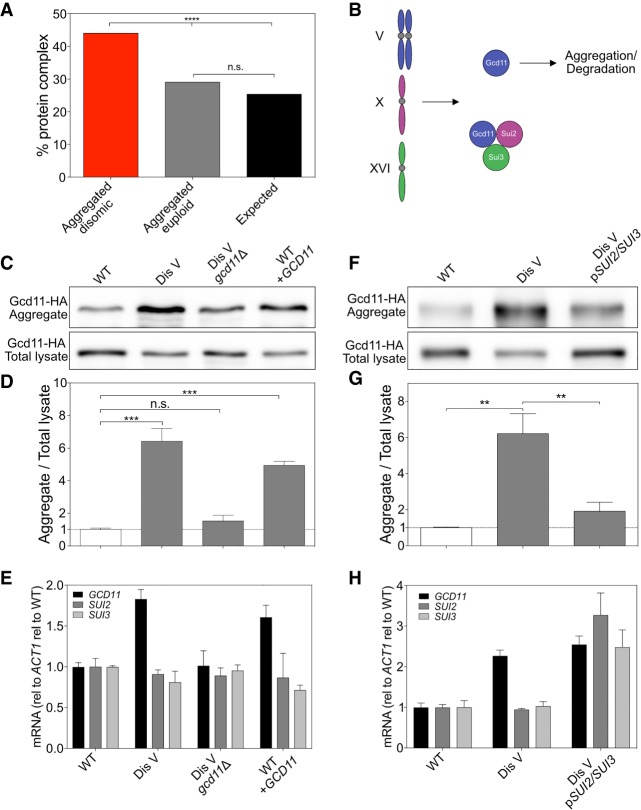Figure 3.
Stoichiometric imbalances of protein complex subunits cause protein aggregation. (A) The percentage of proteins encoded by duplicated chromosomes enriched by log2 ≥1.27 in aggregates (red), the percentage of proteins encoded by euploid chromosomes enriched by log2 ≥1.27 in aggregates (gray), and the percentage of proteins in the genome (black) that are annotated to form protein complexes by Pu et al. (2009) were calculated. (****) P < 0.0001; (n.s.) not significant, cumulative distribution function for a binomial distribution. (B) Diagram of eIF2 complex stoichiometry in disome V cells. (C) Gcd11-HA in aggregates and total lysates in WT (A40189), disome V (A40190), disome V GCD11-HA/gcd11Δ (A40191), and WT URA3::GCD11-HA (WT + GCD11; A40192) cells. Only one of the two GCD11 genes in disome V cells was tagged with HA to ensure that protein levels are comparable between strains. (D) Quantification of Western blots in C. n = 3; SD. (***) P < 0.001, t-test. (E) Cells were grown as in C, and mRNA levels for eIF2 subunits were determined. Values were normalized to ACT1 and then to WT expression levels. n = 3; SD. (F–H) Western blot, relative aggregation quantification, and mRNA expression for WT (A40193), disome V (A40194), and disome V pSUI2/SUI3 (A40195) cells as described in C–E. n = 3; SD. (**) P < 0.01, t-test. (Dis) Disome; (rel) relative.

